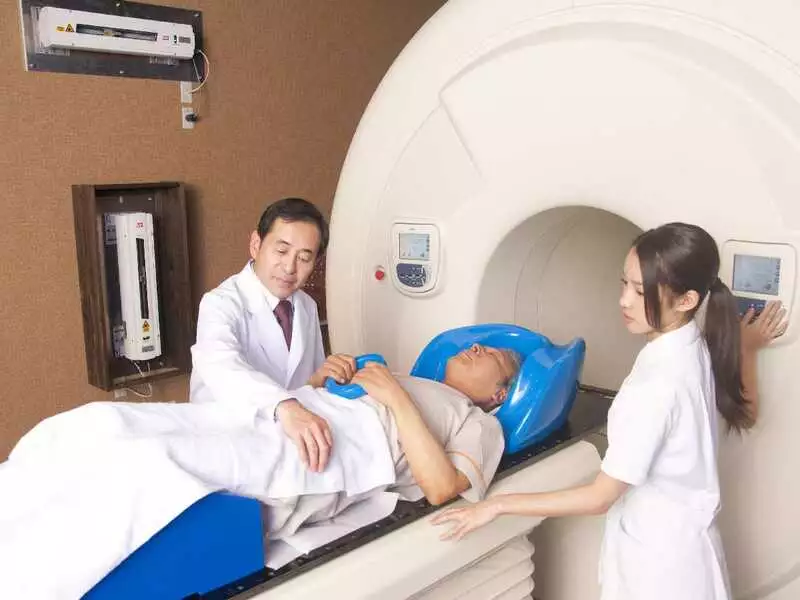Oncological surgical procedures, thanks to the implementation of the latest global medical technology advances, are becoming safer for the patient and possible to carry out, with the intention of a cure, even in the most advanced proliferative processes. Radiation treatment devices (radiotherapy) are being developed with an eye to ever-improving working precision, enabling targeted treatment, focused on the tumour lesion, with minimal strain on critical organs in the vicinity. The addition to oncology treatment of drugs from other groups, also new and successively modified and improved on the basis of previous experience with patients, makes it possible to more fully prevent the side-effects of oncology treatment, which is a burden.
Modes of administration of chemotherapy
Certain types of cancer, due to their local sophistication but also to the anatomical characteristics of certain regions of the human body, are less sensitive to systemic delivery of cytostatics. The low penetration of intravenously administered drugs into the tumour cells necessitates the administration of chemotherapy directly into body cavities. This is the case for primary (peritoneal myxoma, peritoneal mesothelioma) or secondary (metastases of gastric cancer, cervical cancer, ovarian cancer, colorectal cancer) peritoneal tumours. A form of intraperitoneal chemotherapy here is intraperitoneal chemotherapy. The anticancer drug is administered directly into an enclosed space - the peritoneal cavity - in order to achieve the highest possible local concentration of the drug, as penetration of the cytostat into the intraperitoneal tissues from the blood is questionable. Moreover, to increase the toxic effect, the chemotherapeutic agent circulates in the peritoneum for a long time (about 60 minutes) and is heated to 43 degrees Celsius before administration. The treatment method - HIPEC (hyperthermic intraperitoneal chemotherapy) - is used in very few, very specialised centres in Poland. It often becomes a salvation for selected, most advanced oncological patients.
In the case of certain tumours (e.g. aggressive forms of hairy cell carcinomas, brain gliomas, central nervous system lymphomas and others), in special, justified situations, cytostatics are administered directly into the spinal canal. Due to the existence of an anatomical, specific blood-brain barrier, most drugs administered intravenously do not penetrate the central nervous system. Tumours located there are somehow protected from the effects of the chemotherapeutic agent administered intravenously. By administering drugs intrathecally, the blood-brain barrier is bypassed, allowing chemotherapy to be fully effective on tumours located in the hemispheres, cerebellum, medulla oblongata, spinal cord, meninges.
In addition to cytostatics, hormone therapy - treatment with hormonally active substances that act specifically on receptors in the tissue or on the surface or inside the cancer cell - is used in oncological treatment. These can inhibit cell growth, cell division or impair cell function. Examples of cancers for which hormone therapy is effective include breast cancer, prostate cancer and certain soft tissue tumours.
Oncological surgery
Oncological surgery is a surgical field that, together with radiotherapy and chemotherapy, forms the basis of oncological treatment. In clinical practice, it plays an extremely important role from the initial oncological diagnosis, treatments that prepare the patient for further stages of treatment, to radical treatment, complementary chemotherapy and radiotherapy and palliative management. Oncological surgery is one of the most difficult procedures for the patient. Sometimes these operations last for hours and place a drastic strain on an organism already heavily affected by cancer. They sometimes involve extensive tissue and organ resections, require perfect preparation from the patient and unusual knowledge, experience, responsibility, ability to make quick decisions and mental and physical endurance from the operating team. The main, most important aim of surgical interventions in cancer treatment is the removal of the tumour in its entirety, with a margin of healthy tissue. The extent of surgical intervention is usually related to the size of the tumour, but also to the type of cancer involved.
We can divide oncological treatments into:
- diagnostic surgery,
- prophylactic,
- curative - radical,
- palliative,
- reconstructive.

photo: panthermedia
As mentioned above, surgical treatment for malignant tumours is usually only part of a combination treatment. To be fully effective, the patient is referred for combination treatment supplemented by radiotherapy, chemotherapy and others.









